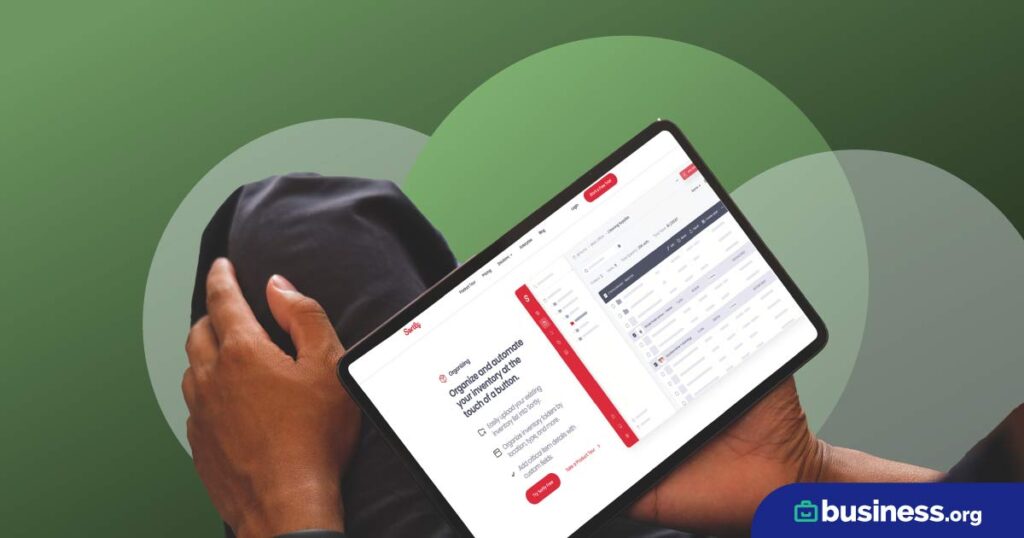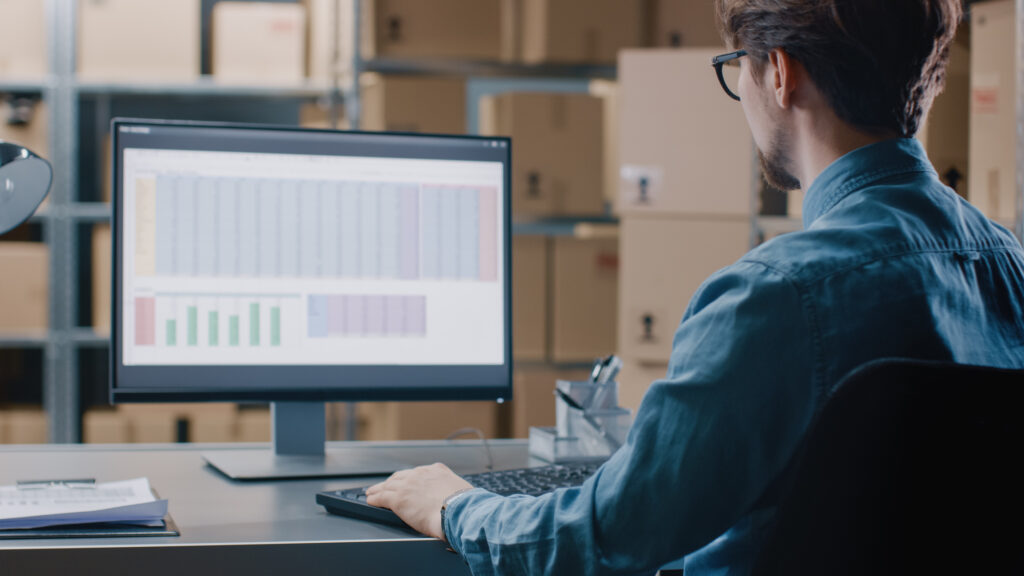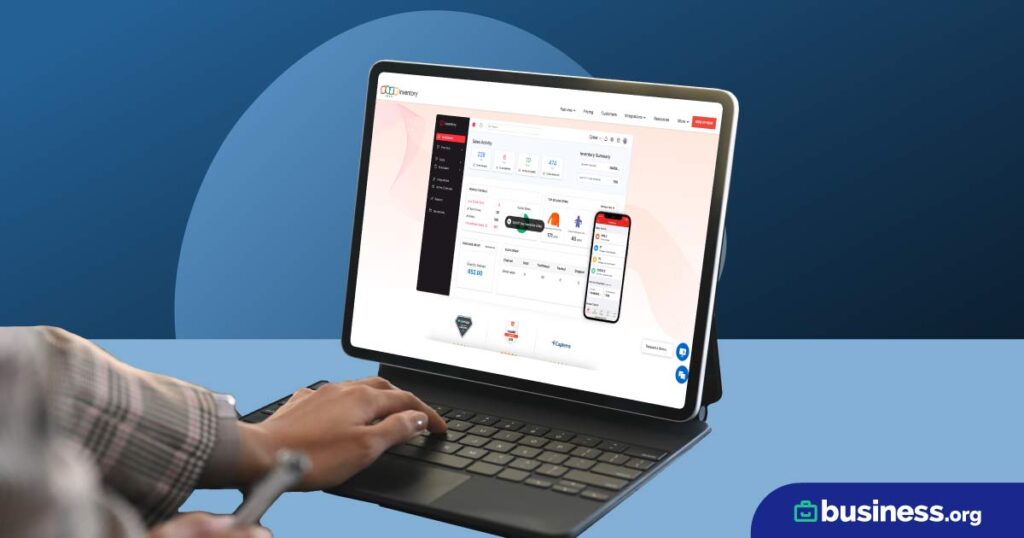We are committed to sharing unbiased reviews. Some of the links on our site are from our partners who compensate us. Read our editorial guidelines and advertising disclosure.
How Inventory System Software Can Help Reduce Costs
We gave this piece a complete overhaul for 2020—all to ensure we’re giving our readers the freshest, most up-to-date information.
You may have already heard about all the ways inventory management software can help your business. But let’s face it: inventory management software represents a big investment for many small businesses.
So before you spend good money on software, let’s review all the ways that it can help you save.
How inventory management software reduces costs
1. Better forecasting
Whether you’re running a push or pull inventory management system, a lot of your inventory decisions are based on your projections for customer demand. Unfortunately, forecasting demand is basically guesswork, and if your projections are off even a little, it could mean serious overstocking or understocking—either of which could cost your business a pretty penny.
With inventory management software, though, forecasting gets a lot easier—and a lot more accurate. Your software solution can apply high-tech algorithms and data from your past sales to forecast demand more accurately than any human. And if your forecasts are more accurate, you’re less likely to order too many products (or too few).
Ultimately, this saves you money since understocking items leads to product shortages. When you don’t have enough inventory on hand to meet demand, your customers may take their business elsewhere (and possibly never come back). Overstocking has financial consequences as well since you have to pay more to store the extra inventory. Plus, there’s always the chance that you won’t be able to sell your extra stock, which would basically make those products a loss for your business.
Inventory management software can help you reduce these costs by ensuring your forecasting is as accurate as possible.
2. Automatic reordering
With inventory management software, you can set rules for the amount of stock you want on hand. Then your software can track your stock levels in real time, factor in lead time on new product orders, and find the ideal point to place replenishment orders.
Have multiple locations? Or multiple sales channels (like an online store, retail location, and social media)? Your inventory software can track inventory levels for each location and each channel within your business. When stock levels get low for any location, your software can automatically trigger replenishment by reminding you to transfer stock between stores or by reordering new stock.
Ultimately, this saves you money by (once again) helping you avoid product shortages or overstocking. Plus, inventory management software can automatically calculate your economic order quantity (EOQ), ensuring your business strikes the most cost-effective balance between ordering costs and storage costs.
By signing up I agree to the Terms of Use and Privacy Policy.
3. Less product spoilage
Inventory management software allows you to track all of your inventory items in real time. That way, you can actually enforce a strict fulfillment strategy—whether it’s first in, first out (FIFO), last in, first out (LIFO), or first expired, first out (FEFO).
With a FIFO system, your inventory management software can help your warehouse staff identify the oldest items on your shelf and sell those first, which ensures your product stays fresh (and is therefore more sellable). That reduces the chance of your inventory becoming a loss down the road.
With a LIFO system, you can ensure that the newest items on your shelf are sold first. That way, only the oldest products run the risk of becoming obsolete. This reduces loss for your business, since older products are (theoretically) worth less than your newest items.
Also, if your business runs a FEFO system with perishable inventory, inventory management software can save you money by making sure the items with the earliest expiration date get sold or used first. In restaurants, for example, this reduces the financial losses your business incurs by investing in products that go bad before they’re sold.
4. Storage
We’ve already mentioned that inventory management software can help you avoid the higher storage costs that come with overstocking. But since inventory storage costs can be expensive, we thought we’d mention it again.
Inventory management software can lower your storage costs by applying the economic order quantity (EOQ) formula to your business. This formula accounts for storage costs and helps you determine the ideal time to reorder product so you don’t have to pay more for storage than is absolutely necessary.
5. Enhanced warehouse organization
Many inventory management software solutions don’t just let you track your items in real time—they also help you organize your warehouse so you (and your employees) know exactly where to find each of your products at any given point.
This helps you save money in two ways: by reducing loss and by improving your order fulfillment.
Without clear organization, many businesses wind up losing their inventory in their warehouse. After all, it’s easy to forget where you put your products when you’re just shoving them into whatever space is available when the shipment arrives. Inventory management software helps you plan your storage space so your crew knows exactly where each item goes—reducing the costs that come with lost inventory or products that go bad sitting on a forgotten shelf.
Good warehouse organization also helps your employees pull the right items when fulfilling customer orders. When customers receive inaccurate orders, they’re more likely to return items—losing you a sale in the process. It may also negatively affect their opinion of your business, which could lead to less revenue down the road. Fortunately, inventory management software helps you keep your warehouse organized so your fulfillment team can pull the right items (and spend less time finding them).
6. Better accounting
Finally, inventory management software allows you to track individual items within your system and assign exact costs to each one. This helps when you’re trying to figure out your cost of goods sold (COGS).
COGS is one of the factors the government takes into account when calculating your business taxes, so having the most accurate COGS possible could potentially save you money on your taxes.
The takeaway
Inventory management software is a huge help if you’re trying to reduce costs for your business. Inventory software can forecast customer demand with greater accuracy than a human, so you’re more likely to avoid the costs associated with overstocking or understocking your inventory. Software can also help you identify the most cost-efficient order point and trigger reorders automatically.
You can also save money on storage and reduce loss within your warehouse by using your inventory management software to enforce your business’s fulfillment strategy and keep your warehouse organized. Plus, you can improve your company’s customer satisfaction with more accurate order fulfillment, thereby gaining loyal customers and securing future business.
Inventory management software can also potentially help you save money on your taxes by assigning the most accurate costs to the goods sold by your business.
Wondering which inventory management system is right for you? Check out our guides to periodic vs. perpetual inventory strategy and push vs. pull inventory management.
Disclaimer
At Business.org, our research is meant to offer general product and service recommendations. We don't guarantee that our suggestions will work best for each individual or business, so consider your unique needs when choosing products and services.





